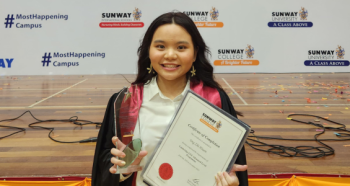Many schools around the world are now more settled into the routine of online teaching or a mix of in-class and online sessions. It is truly amazing how teachers and students have adapted and how they continue to rise to the challenges of teaching and learning through a pandemic.
An online summer school
In the past, I have worked with an organisation called Cambridge Community Arts, who use creativity to help people overcome mental health challenges. In 2020, I decided to volunteer to help them move their teaching online, and joined a project that was being funded by the Arts Councilin their response to Covid-19. The project was to write and deliver an online summer school for people who were shielding or isolated, and at risk of suffering poor mental health. I decided to focus on design development, as this is something that students often struggle with. Often they can generate an idea but then find it difficult to develop it and push it into new directions.
Teaching a practical subject like Art & Design online is challenging, especially with a group of students with very different ideas and abilities. Throughout the online project I had weekly online meetings with other teachers involved in the project, and we shared experiences and frustrations. I made new friends and learnt new skills that I was not expecting when I started out. We helped each other to learn new technology, tested lessons out on each other, and created a valuable support network.

Face-to-face teaching can sometimes be a little passive. For example, students often come into the classroom and the teacher has already organised everything for them. However, with online learning the students have to get more involved and take more responsibility. They may need to set up their equipment and clean and tidy it away at the end of the session.
I spent a lot of time preparing in advance of my online sessions, so that I was well prepared during the live lessons:
- With the help of my teenage son, I set up a YouTube channel and recorded a series of eight 15–20-minute tutorials.
- I used a camera and a microphone, which we already had, and edited the videos in Adobe Premiere. I also used screen recordings and mobile phone recordings, for shorter tutorials.
- At the start of the course, I gave the students a plan that covered eight weeks so they could prepare materials and knew what each lesson would cover. I also sent out a basic materials pack including glue, pencils and different types of paper and collage materials.
- We used Google Classroom and I put the links to the videos in the classroom stream on a timer. I did this a week ahead of the session so the students could watch them in their own time.
I planned to show the video through my laptop and do the task together with the students, but this didn’t work at all as the sound quality through my laptop was not good enough for the students. So instead, I focused my laptop camera on my hands for the demonstration and then afterwards the students could watch the video and do the activity at their own pace.
It re-kindled my love for sketching and drawing and I found working in my own sketchbooks a great way to switch off from the stresses of working and parenting through a pandemic.
During the course, I kept a reflective diary of my teaching, which is something I had done at the start of my teaching career but less so over the years. It felt like I was learning new skills again and keeping a diary helped me to consider what was working, and what could be improved.
Each group is different, and some worked faster than others who needed more time and support. I realised that I needed to include time to catch-up and recap. The students wanted to finish things off properly, so I needed to include this time in the session rather than spending time on talks and demonstrations.

Reflections
I will be teaching this course again, and here are some of the things I’m going to do differently:
- Use breakout rooms for students to work together and talk through ideas, these can also be great for 1:1 catch ups. Some students need to ask questions and get reassurance. They don’t all have the confidence to speak up in a group or put a message in the chat box.
- Word of the week photography competition or art club theme to engage students at different levels.
- Make more shorter video tutorials, e.g. 2–5 minutes long. Include a video about how to upload and submit work.
- Focus on skills for some sessions: collages of everyday objects, drawing details like ellipses, folds in fabric, hands and faces of family members.
- Include research into artists, techniques or different materials, as projects or a teacher-led session. All the links to artists and websites are in the class stream and the students add things they are interested in.
- Students enjoyed talking to each other in the sessions, and peer feedback is valuable. There are some great collaborative online tools like Padlet, Google Jamboard, Miro and Trello. Responding to feedback demonstrates evaluation and development skills so I am encouraging this in my classroom.

Taking time out and learning something new
After a day of video calls the last thing I want to do is check my emails and have video catch ups, so I’ve been putting my laptop away and going for a walk and taking my sketchbook with me. Living through a pandemic is a challenge, the students and teachers are tired, and now more than ever it is important to do something for our own well-being. My younger son is learning the guitar and it has been so nice to spend time together in the evenings learning a new skill as we juggle working, home schooling and living our lives online.
To do something creative for myself, I signed up to an online painting course and I am really enjoying being taught and learning something new. I have also seen an amazing Zoom Fashion Illustrationclass that I would like to try. There are some wonderful creative opportunities available online.
Finding inspiration
We have seen some incredible work from the November 2020 exam series candidate entries, where students have just the basics to work with. They don’t need an expensive camera or a lot of equipment, they just need good ideas and to be inspired. Sometimes just drawing or recording the things in their own environment and developing them into something meaningful is enough.

About the author
Rachel Logan has been with Cambridge International as a Product Manager for eight years and before this worked as a teacher and Programme Manager in a busy sixth form in Cambridge. She has been an examiner, author and curriculum writer and has taught Art & Design in a range of formal and community settings for the last 24 years. Rachel also has a YouTube pottery channel.





